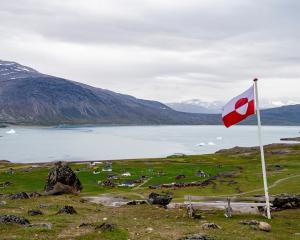
Councillors this week voted narrowly in favour of pushing for Queenstown to be considered a tier-one centre when it comes to transport funding.
If Queenstown, currently designated tier two, became a tier-one urban environment it would join Auckland, Christchurch, Wellington, Tauranga and Hamilton and move ahead of tier-two Dunedin.
Cr Michael Laws raised the matter at the regional council’s public and active transport committee earlier this week.
"Queenstown is the jewel in the crown of our tourism industry.

Cr Laws said it was a travesty Queenstown was not considered a tier-one city or region.
There were major congestion issues and infrastructure issues that needed to be addressed, and the regional council should publicly advocate for change.
"We’re in an election year, and time is running out."
At the meeting, Cr Laws forwarded a motion the regional council "advocate all of the major political parties to examine the decision to define Queenstown Lakes District Council be made a tier-one centre for Waka Kotahi [NZ Transport Agency] public transport involvement".
The motion was supported by Crs Gary Kelliher, Kevin Malcolm, Tim Mepham, Bryan Scott and Alan Somerville.
It was opposed by Crs Alexa Forbes, Lloyd McCall, Andrew Noone, Gretchen Robertson and Eliot Weir.
Cr Kate Wilson abstained.
When asked if Dunedin should also be made tier one, Cr Laws yesterday said its rating base was sufficient to meet its needs, and it did not have the congestion issues of Queenstown.
"Queenstown is a unique case in New Zealand.
"It’s got a very small rating base of roughly 25,000 people, but needs to provide infrastructure for around 120,000 people, especially during peak tourism periods.
"The public transport solutions for Queenstown will be expensive.
"Waka Kotahi are not going to make any further investment into Queenstown unless it’s considered a tier one."
Cr Laws said there needed to be the political will to make the case for Queenstown, but said it was still possible to complete major projects in the regions.
He said Dunedin’s public campaign for its new hospital was a good example of this approach working.
"Unless you politicise and politically lobby, you end up with the supine position of just saying ‘amen’ to whatever solution that comes out of Wellington."
Queenstown Lakes District Council chief executive Mike Theelen yesterday said his council was open to any discussion with the regional council and other stakeholders that had the potential to lead to greater public transport investment in Queenstown-Lakes.
"We would need to consider this specific idea in more detail to fully understand the implications one way or the other."
Dunedin Mayor Jules Radich said he was not going to get into a debate over whether Queenstown, or Dunedin, deserved to be considered tier one.
He said he was keen to work with the regional council and the transport agency on getting better public transport for Dunedin.
An agency spokesman said Queenstown was considered tier two as defined by the National Policy Statement on Urban Development.
This put it on par with Whangārei, Nelson-Tasman, Rotorua, New Plymouth, Napier-Hastings, Palmerston North and Dunedin.











